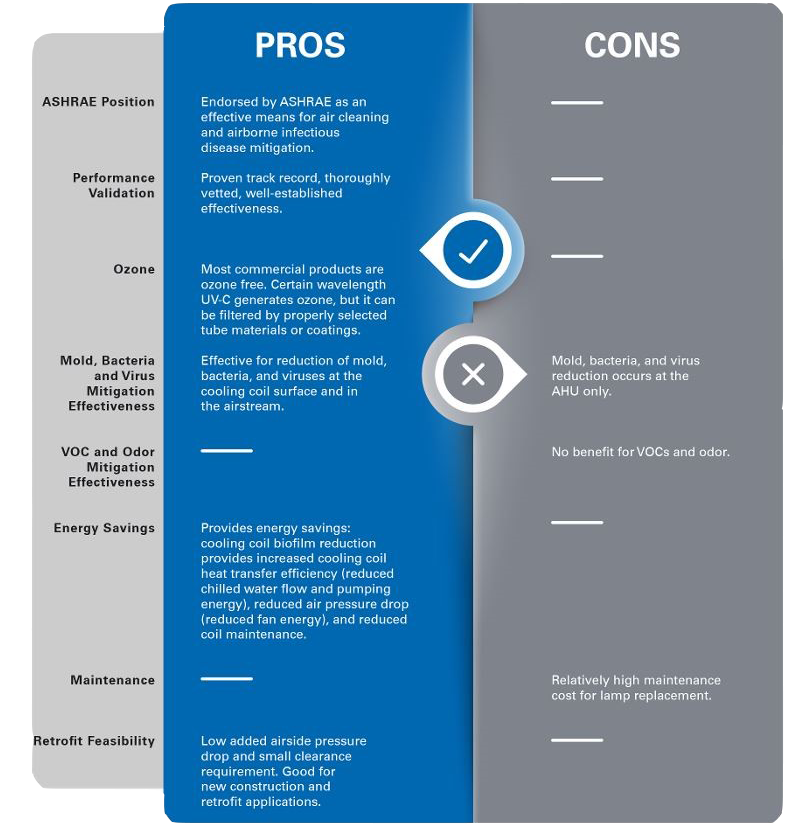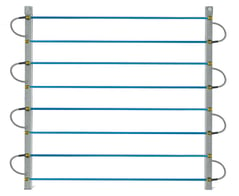Many tenants, employees, and students have learned more about viruses in the last three months than in their whole lives. Though it is particularly relevant at the moment, this knowledge, along with the actions we take in putting it into practice, will continue to benefit everyone into the future. For building operators, their response is not best aimed short-term, at a COVID-only strategy, but long-term – accounting for the health and well-being of occupants, no matter what illness is floating around. The implementation of UVGI, or Ultra-Violet Germicidal Irradiation, technology is one such long-term solution.
The History of UVGI Technology
Ultraviolet light has been used for disinfection for more than a century, with the first HVAC system application taking place in 1940. It is a thoroughly vetted technology that has a proven track record. Typical commercial products use the UV-C band wavelength of 253.7 nm, which is a near-optimal wavelength for degrading organic material and inactivating microorganisms and pathogens. Use of the UV-C band energy to inactivate microorganisms is often referred to as UV Germicidal Irradiation.
UV exposure is hazardous to humans, so it is typically used in one of four configurations:
The Pros and Cons of UVGI


UVGI is appropriate for new construction as well as retrofit applications. LONG can help you determine if this technology is right for your building and which products will be best suited for your specific needs. Two of the products LONG currently offers from our partners UVDI are designed to provide effective airstream disinfection: the V-MAX Grid for large HVAC systems and the V-MAX for small commercial HVAC systems. Both products are easy to install, require minimal space for installation, and have a scalable design so they can fit any plenum size, among other features.
for installation, and have a scalable design so they can fit any plenum size, among other features.
For more information about these products or UVGI for HVAC systems, reach out to LONG today.
Much of the information in this article was originally written in this article by EDS Global.

Justin Mouttet is a Sales Engineer for HVAC Equipment in Colorado.
We are always looking for bright, ambitious new team members. Join Team LONG today!